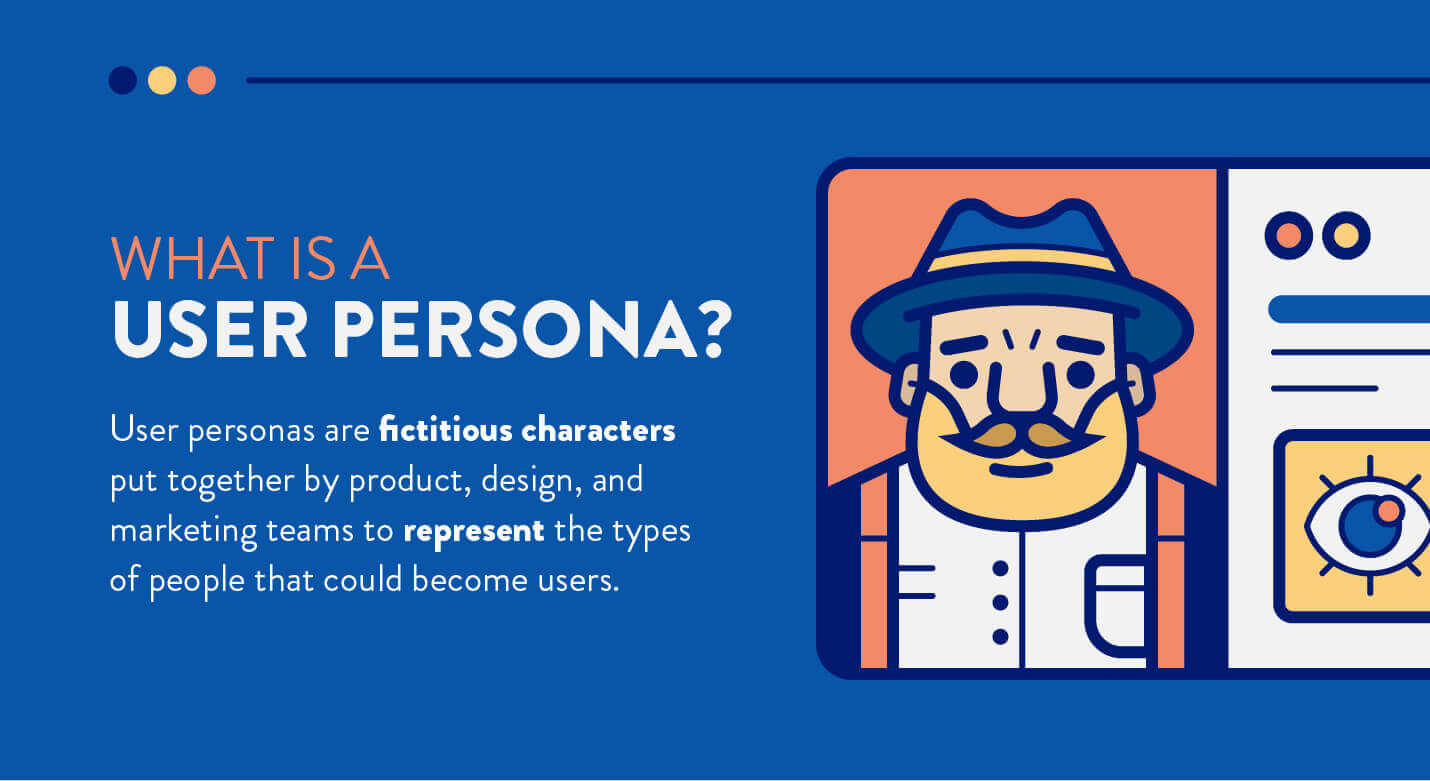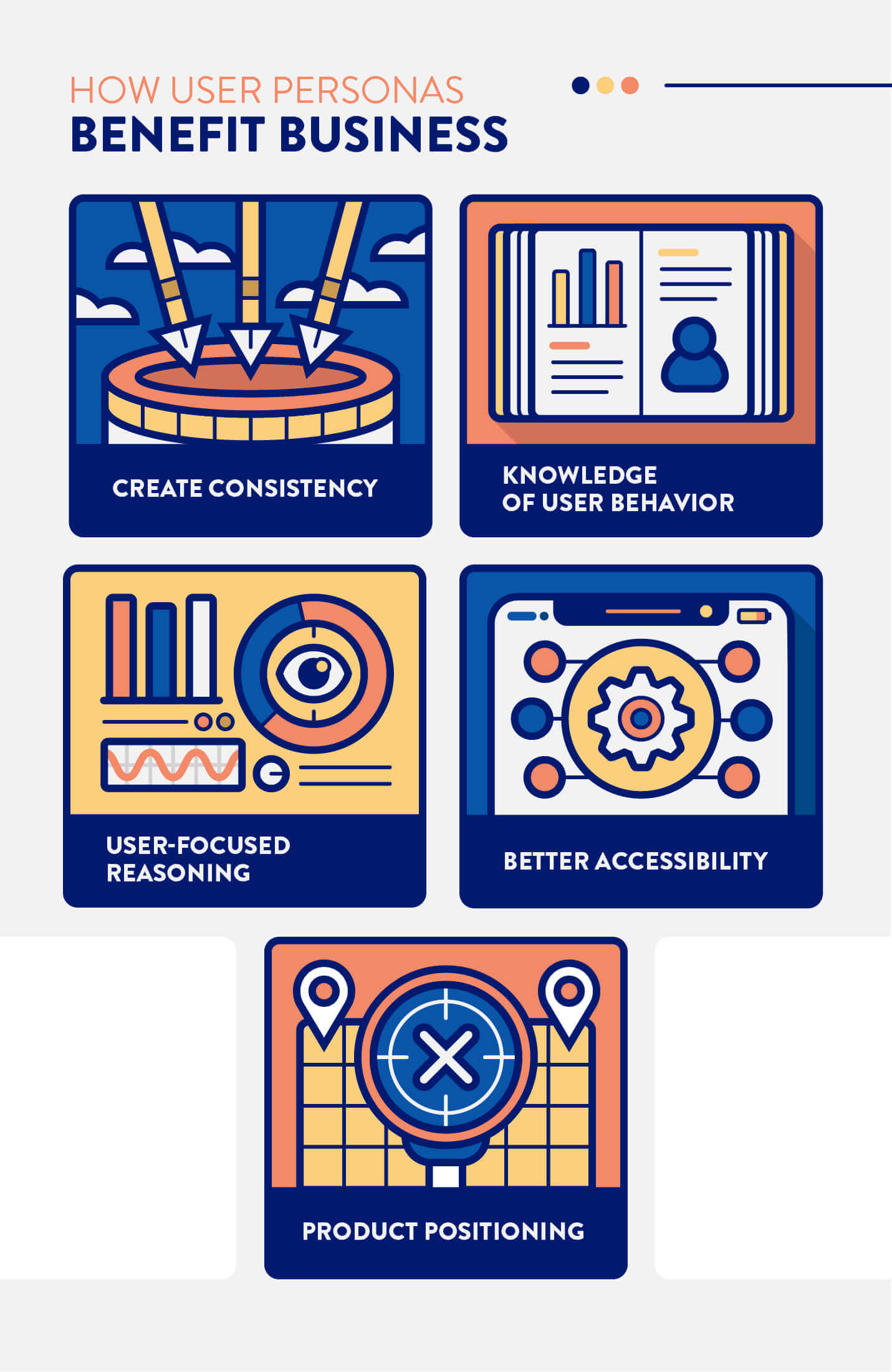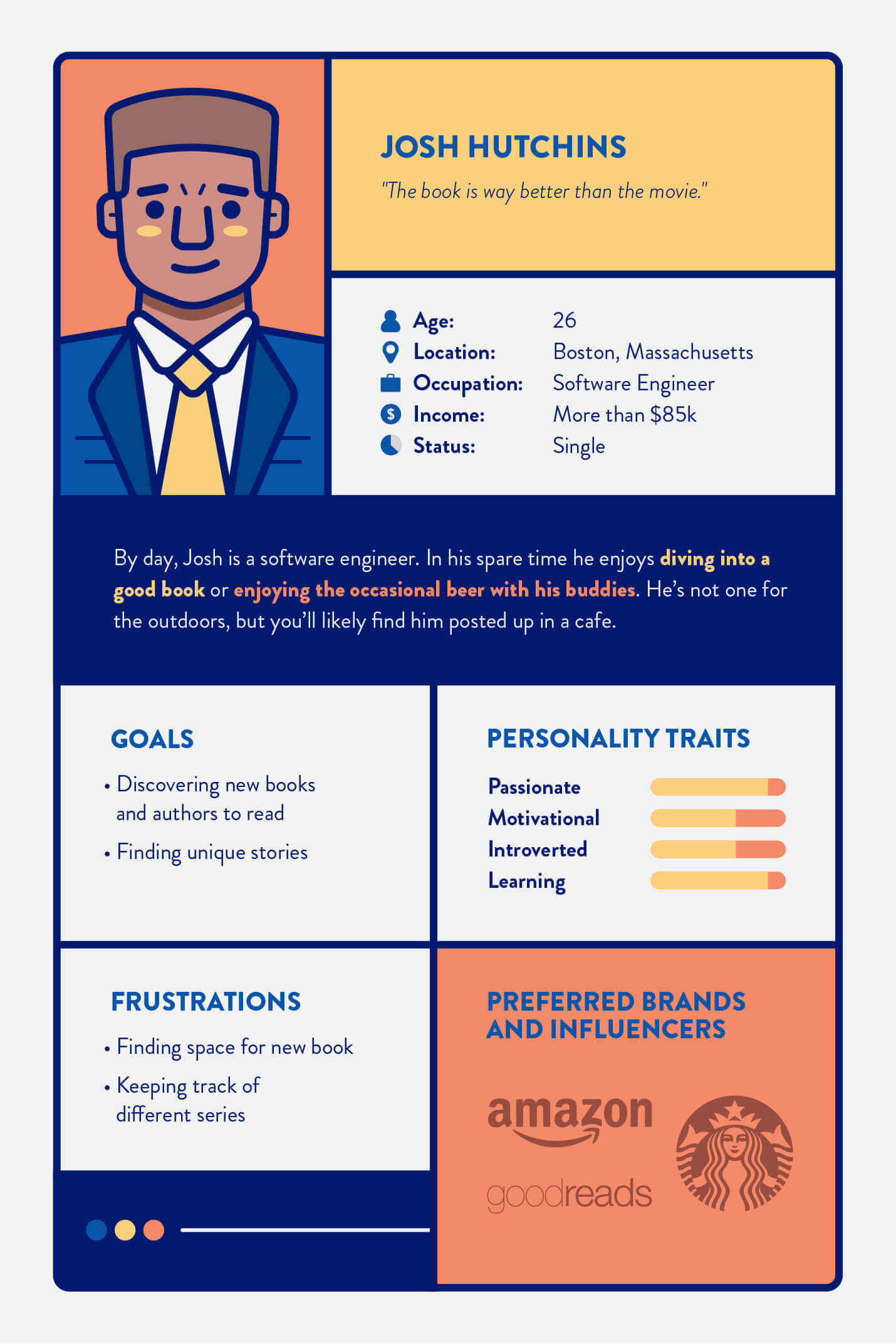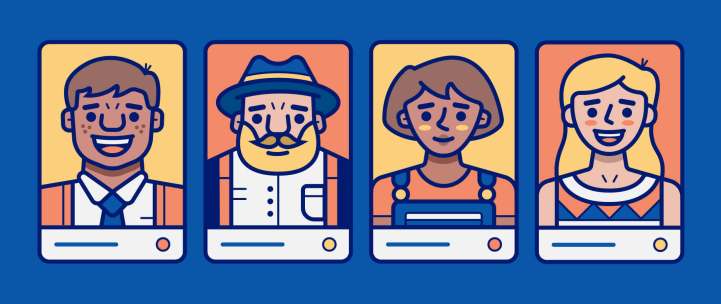Having users means you’re doing something right — people are engaging with your product.
Needless to say, it’s important to identify who’s on the other side of the relationship if you plan to keep it that way. Businesses who aren’t in touch with their users are often helpless in understanding how they think and make decisions that affect purchasing power.
At the same time, a business that simply takes a guess at who their audience is or what they want may be completely off base — losing sales and customers as a result.
This is where creating user personas helps businesses better understand and reach their target audience. Of course, this is easier said than done, so we’ve put together this guide to help you craft user personas that actually move the needle.
Continue reading or jump to our infographic to learn how to utilize user personas for segmentation, user experience, and more.
What is a User Persona?
User personas are semi-fictitious representations of your target customers. A user persona is framed from real customer discovery and researching the needs, goals, and observed behavioral patterns of a target audience.
User personas help you get inside the mind of your audience. They allow you to gain valuable insights and make decisions based on your users’ needs.
Personas are especially helpful for gauging the effectiveness of functional UX design through the eyes of a user.
How Many User Personas Do You Need?
It’s rare that a business only targets one audience. Chances are if you’re building your online presence, you’ll be trying to target a range of audiences. In this case, one user persona isn’t going to cut it — leaving you to decide how many you should actually create.
At first, a couple dozen user personas might seem like a good idea. But you’ll realize that the more you create, the more they begin to resemble one another.
We suggest creating no more than four user personas.
Most brands have audiences with characteristics that fall under a subset of primary personas. Having any more just makes user personas unnecessarily complicated and can lead to a lack of focus and a jumbled creation process. Because the goal of user personas is to gain insight into the bulk of your audience, four is more than enough.
As an example, let’s consider four basic personas of an app that allows users to schedule junk removal:
- Bill Brooks: Bill is a general contractor who consistently has a need for junk removal. Urgency is important for Bill because he needs junk removed to complete his work.
- Chad McFadden: Chad is a college student who moves once every 12 months as some roommates move back home and he finds a new apartment. Chad needs a mattress and couch removed before the landlord will return his deposit. Price is the biggest factor for Chad.
- Pam Miller: Pam is a homeowner and rarely needs junk removal but when she does, she needs full service removal, as her disability will not allow her to move the junk into an easily accessible location.
- Ronnie Creager: Ronnie lives in a cabin inaccessible by traditional waste management trucks, but needs his waste removed on a monthly basis. For Ronnie, the ability to schedule a monthly pickup is important and with a similar amount of waste for removal each month, he likes having a predictable pricing model.
User Personas and Segmentation
Using behavioral and psychographic data, a business can reflect on who their users are, what they need, and what may stop them from getting it.
Psychographic segmentation capitalizes on specific characteristics and psychological qualities that make a user unique. By dividing customers based on psychological factors like behaviors, personalities, lifestyles, values, and social status, businesses can then analyze the data to predict how a user will respond to targeted marketing campaigns.
As a result, behavioral and psychographic segmentation are incredibly valuable in not only understanding your users, but also compiling the correct data to build user personas. This can help your team take their mobile app marketing strategy to the next level.
How User Personas Benefit Business
User personas are extremely useful to grow and improve a business. They help uncover the different ways people search for, buy, and use products, so you can focus your efforts on improving the experience for real people through real data.
User personas benefit a business in several ways:
Create consistency across the business: User personas offer a company-wide understanding of your users, putting everyone on the same page. Across the board, personas create a consistent and specific understanding of each target group of customers within your company.
Signal user behavior: By gaining insight into the backgrounds of user personas, you’ll have a better understanding of where your real users spend their time, where they obtain information, and which social networks they thrive in. This information allows you to target and promote your products or services in places where they will actually be seen.
Help with user-focused reasoning: So, you and your team have brainstormed a service or offer that you think will be valuable to your users, but is it really something that they want? You might think your idea is genius, but what if you spend time brainstorming and it’s not something that’s actually in demand? User personas help eliminate wasted time and resources by clearly focusing on the needs of the user.
Improve design and development workflow: Not only do personas allow you to gain knowledge of user behavior and create consistency across your business, but they’re incredibly valuable in enabling design and product managers to create better products, services, designs, and UX. Better development guarantees your ability to suit the needs and preferences of your real users.
Define product positioning: Because you’ve utilized user personas in the brainstorm and developmental phases, you’ll be in a better place to position your product when it comes to promotion. User personas arm you with research to face the challenges and problems that come with product positioning.
In short, user personas allow you to operate more effectively as a business all the way down to clearer decision making and positioning.
How Do You Make a User Persona? [Checklist and Examples]
Not sure where to start? Here are some basic features to include in every user persona.
- Name: User personas should feel like a real person. Giving them a name is the first step. Avoid general denominations like “John Doe” or “Sally the Thrifty Shopper.”
- Photo: You always want to put a face to a name. Some companies choose to use fictional characters and celebrities as their persona photo but we advocate against this in order to create a new and original identity that’s free of stereotypes or preconceived traits.
- Personal motto: Just like a photo, this helps build out your persona to make them feel more realistic.
- Bio: Everyone loves a good back story. Give your persona a little history. Where did they grow up? Why did they choose their current job? How do they spend their free time? Include some details that help make them unique.
- Demographics: Of course, you’ll want to target users with specific interests, wants, and needs, rather than your perception of those things. Including demographics will help improve your understanding of and relationship with users, so you can relate to them in the way they want.
- Personality traits: Does your persona have a short attention span? Are they cautious? Do they make impulsive decisions? Assigning personality traits might help you understand if you need faster site designs or the option to comparison shop.
- Motivations: The goal is to get inside your user’s head and understand how they think. More importantly, what motivates them to use your product?
- Goals and frustrations: While the scope of a persona’s goals and frustrations should directly relate to your business needs, it’s worth highlighting goals that your persona may have outside of those your product or service directly impacts.
- Preferred brands and influences: You can learn a lot about a person by diving into brands they like and influencers they follow. Chances are the marketing tactics used by these brands and influencers will likely apply to you as well — allowing you to craft your outreach accordingly.

5 User Persona Tips: Beyond the Basics
There are user persona basics, then there are components that create an exceptional persona that will not only help you understand your target audience but allow you to create better products for them. After you’ve gone through the basic checklist of elements to include in your persona, it’s time to apply these expert tips.
- Use a map that depicts your customer/user journey: It can be tough to build a user persona, so try mapping the customer journey instead. This is a great way to study how they use a product and find both positive and negative experiences.
- Use illustrations and visuals to emphasize persona information: Illustrations and easy-to-digest visuals go a long way in effectively adding context and information. To make your user persona guides more memorable, incorporate design elements that reflect each individual persona. While on the subject of design, we also suggest streamlining layouts between persona guides for ease of comparison.
- Highlight common metrics and key differences: To avoid comparing abstract things like bios and keywords, try highlighting one similar metric between user personas. At the same time, different people have different goals, problems, and preferences, so pointing out key differences can be useful in keeping marketing campaigns segmented and your product features focused.
- Use sliding scales to define user characteristics: While it’s good to be as specific as possible in your user personas, there are some aspects that are better represented on a sliding scale, such as personality traits and skills. Doing so prevents a persona from being stereotyped or depicted inaccurately.
- Keep them short and sweet: Lastly, a persona is supposed to be a concise snapshot of a particular segment of your target customer base. Any member of your team should be able to quickly look at the user persona and absorb the information presented to them. If a user persona doesn’t clearly portray who this person is and what motivates them, then it’s time to go back to the drawing board.
User Personas and You
User personas are a key tool in exploring the minds of audiences and helping businesses make decisions that accurately reflect user needs. At first read, fictitious personas can seem like busy work. While they do involve conducting research, in the end, they help satisfy your customers’ needs and pain points.
Learn more about how customer segmentation and user data can help you build better user personas through CleverTap’s intelligent mobile marketing platform.

See how today’s top brands use CleverTap to drive long-term growth and retention
Subharun Mukherjee 
Heads Cross-Functional Marketing.Expert in SaaS Product Marketing, CX & GTM strategies.
Free Customer Engagement Guides
Join our newsletter for actionable tips and proven strategies to grow your business and engage your customers.















































